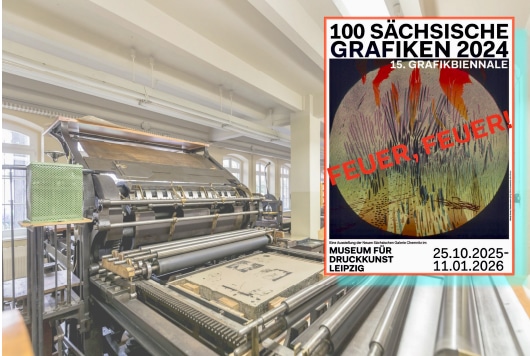The exhibition 100 Saxon Prints 2024, which runs from 25 October 2025 to 11 January 2026 in Leipzig, continues the chain of socially focused themes of recent biennials. The future can no longer be bought with money alone. Indifference is not yet punished, and aeroplanes and cars still fly and drive at will. Living trees still stand in city centres, but the impositions to come will claim victims along the thickness of their wallets. This year’s Graphic Art Biennial draws attention to escalating processes in social interaction.
Parallel to our treatment of nature, social conflicts are increasingly leading to harsher confrontations. Statements are replacing dialogue, and the search for consensus is proving difficult. The works selected last year address controversial topics. The donated art prizes were awarded on the basis of pointed and graphically successful themes.
For the first time, linocut became the most widely used printing technique because its ease of use without a printing workshop reflects the difficult situation of many artists. A long-observed tendency towards large formats is also reflected in this biennial, and artistically, new possibilities are opening up with the combinatorial use of techniques.
For the competition at the 15th Biennale, 148 artists submitted 355 works, of which 66 were selected. The jury awarded five prizes for outstanding prints, funded by private foundations. Kunsthütte is donating the prize money for an audience award, which will be announced at the end of the exhibition. The jury considered the convincing form and conciseness of the artistic language to be the highest criteria for the selected prints.
Museum of Printing Art
Since its foundation in 1994, the Museum of Printing Art has been dedicated to the cultural heritage of printing technology and sees itself as a lively place with a special workshop atmosphere, presenting 550 years of printing and media history on four floors with around 100 functioning machines and presses. Artistic printing techniques of relief, intaglio and planographic printing, which are listed in the German UNESCO Commission’s National Register of Intangible Cultural Heritage, are preserved, maintained and communicated. The museum is located in a listed building in the former industrial district of Leipzig-Plagwitz. The four-winged building looks back on over 100 years of tradition as a printing works and is thus home to one of the last historic printing workshops.

